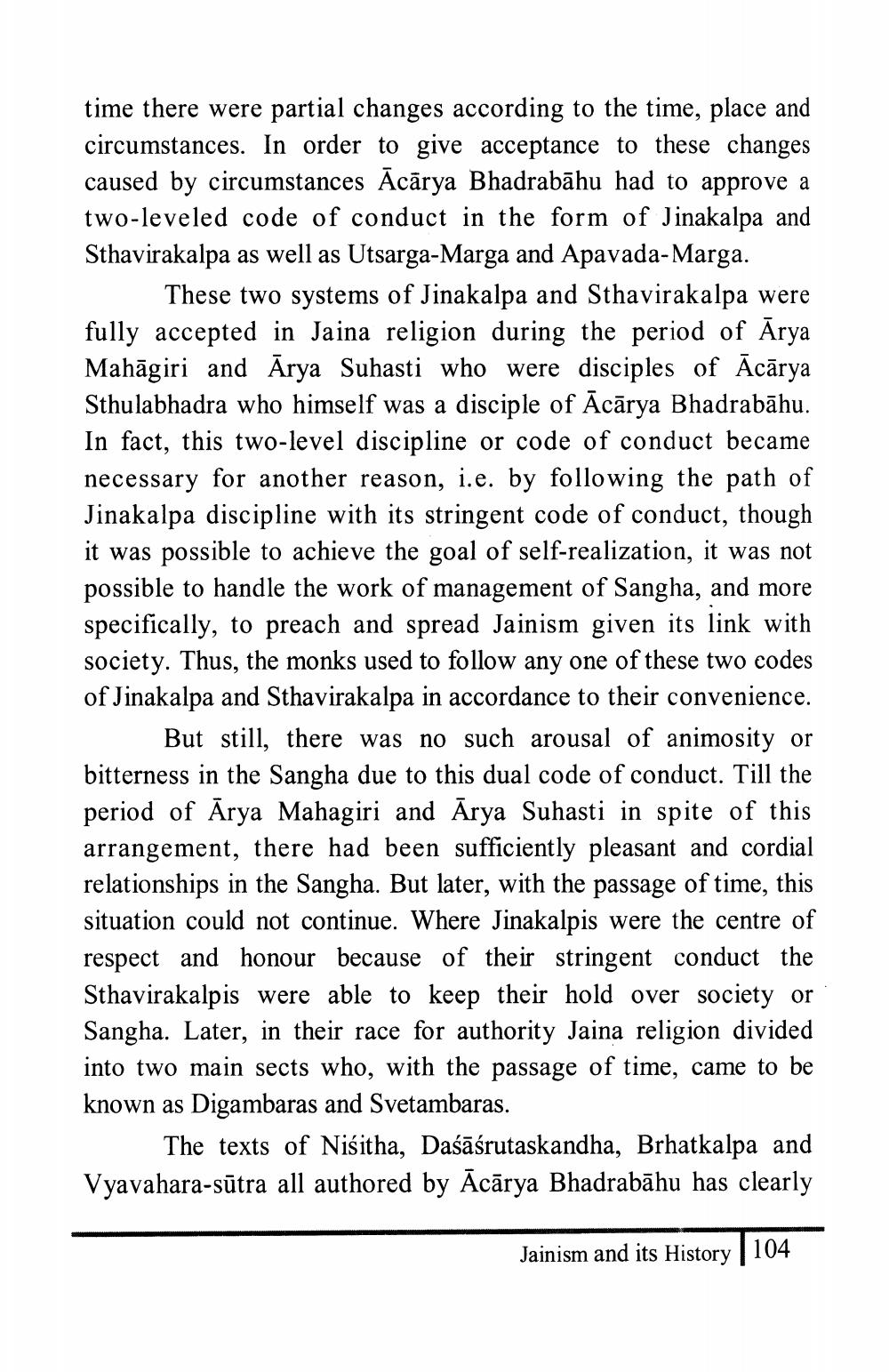________________
time there were partial changes according to the time, place and circumstances. In order to give acceptance to these changes caused by circumstances Acārya Bhadrabāhu had to approve a two-leveled code of conduct in the form of Jinakalpa and Sthavirakalpa as well as Utsarga-Marga and Apavada-Marga.
These two systems of Jinakalpa and Sthavirakalpa were fully accepted in Jaina religion during the period of Ārya Mahagiri and Ārya Suhasti who were disciples of Acārya Sthulabhadra who himself was a disciple of Acārya Bhadrabāhu. In fact, this two-level discipline or code of conduct became necessary for another reason, i.e. by following the path of Jinakalpa discipline with its stringent code of conduct, though it was possible to achieve the goal of self-realization, it was not possible to handle the work of management of Sangha, and more specifically, to preach and spread Jainism given its link with society. Thus, the monks used to follow any one of these two codes of Jinakalpa and Sthavirakalpa in accordance to their convenience.
But still, there was no such arousal of animosity or bitterness in the Sangha due to this dual code of conduct. Till the period of Arya Mahagiri and Ārya Suhasti in spite of this arrangement, there had been sufficiently pleasant and cordial relationships in the Sangha. But later, with the passage of time, this situation could not continue. Where Jinakalpis were the centre of respect and honour because of their stringent conduct the Sthavirakalpis were able to keep their hold over society or Sangha. Later, in their race for authority Jaina religion divided into two main sects who, with the passage of time, came to be known as Digambaras and Svetambaras.
The texts of Niśitha, Daśāśrutaskandha, Brhatkalpa and Vyavahara-sūtra all authored by Acārya Bhadrabāhu has clearly
Jainism and its History 104




